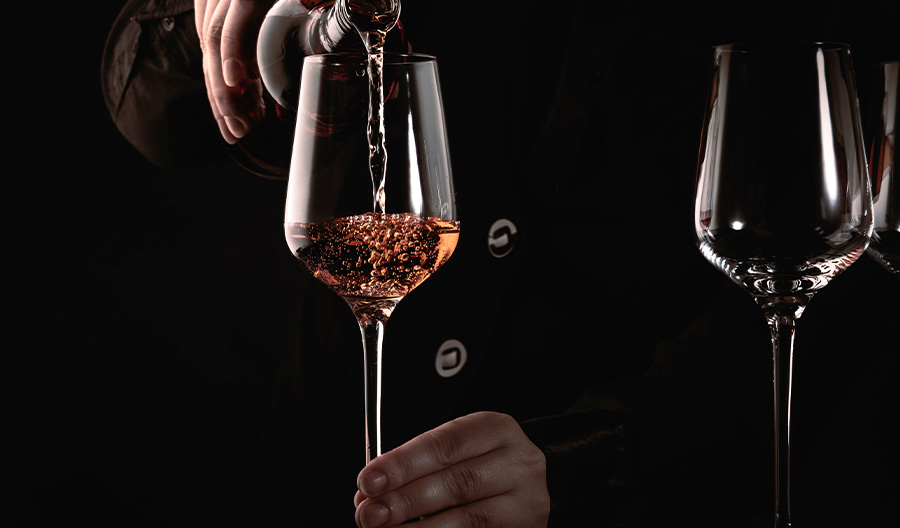The White Zinfandel market is currently experiencing a resurgence in popularity, particularly among younger consumers who are drawn to its light, fruity flavor profile and affordable price point. This trend is largely driven by the millennial generation's preference for sweet, easy-drinking wines.
Another trend in the White Zinfandel market is the shift towards organic and biodynamic production methods. As consumers become more health-conscious and environmentally aware, they are increasingly seeking out wines that are produced in a sustainable and eco-friendly manner. This is leading many White Zinfandel producers to adopt organic farming practices and to seek out certifications that attest to their commitment to sustainability.
Packaging innovation is also a significant trend in the White Zinfandel market. Producers are experimenting with alternative packaging formats such as cans, boxes, and tetra packs, in a bid to appeal to younger consumers and to differentiate their products in a crowded market. These packaging formats are not only more convenient and portable, but they also have a lower environmental impact than traditional glass bottles.
Finally, there is a growing trend towards premiumization in the White Zinfandel market. While White Zinfandel has traditionally been seen as a low-cost, entry-level wine, many producers are now creating high-end versions that are designed to appeal to more discerning wine drinkers. These premium White Zinfandels often come from specific vineyards or sub-regions, and they are typically characterized by more complex flavor profiles and higher price points.
Key Characteristics of White Zinfandel
White Zinfandel is unique due to its color, which is a light pink hue. This is achieved through a process called 'short maceration', where the grape skins are left in contact with the juice for a brief period. This results in a lighter color than traditional red Zinfandel wines.
Another characteristic that sets White Zinfandel apart is its taste profile. It is known for its fruity, sweet flavor, often with notes of strawberry, melon, and peach. This sweetness is a result of the fermentation process being stopped before all the sugar is converted into alcohol, leaving residual sugar that adds to the wine's sweetness.
White Zinfandel is also unique due to its low alcohol content, usually around 10%, making it a lighter choice compared to many other wines. This, combined with its sweet flavor, makes it a popular choice for those who prefer a less intense wine.
Additionally, White Zinfandel is known for its versatility. It can be enjoyed on its own or paired with a variety of foods, from spicy dishes to desserts. This makes it a popular choice for restaurants and caterers.
Finally, the history of White Zinfandel is unique. It was created accidentally in the 1970s when a batch of red Zinfandel wine was 'stuck' during fermentation, leaving it sweeter and lighter in color. The result was so popular that it was continued, leading to the White Zinfandel we know today.

The Production Process
The production of White Zinfandel begins with the harvesting of Zinfandel grapes, a variety of red grape that is known for its robust flavor. The grapes are typically harvested early in the season when their sugar levels are lower, resulting in a wine with lower alcohol content.
The harvested grapes are then crushed and destemmed. This process breaks the skin of the grapes and separates the stems from the fruit. The juice, skins, seeds, and pulp that result from this process are collectively referred to as the 'must'.
After the crushing and destemming process, the must is then transferred to a fermentation tank. Here, yeast is added to the must to initiate the fermentation process. The yeast consumes the sugars in the juice and converts them into alcohol and carbon dioxide. This process typically lasts for several days.
Unlike traditional red wines, the must of White Zinfandel is not left to ferment with the skins for a long period. Instead, the skins are separated from the juice after a short contact period, typically 12 to 24 hours. This brief contact period gives White Zinfandel its characteristic pink color.
Once the skins are removed, the juice continues to ferment until the desired level of sweetness is achieved. To stop the fermentation process and retain some of the natural sugars in the wine, the winemaker chills the wine rapidly, a process known as 'cold stabilization'.
After the fermentation process is complete, the wine is then filtered to remove any remaining solids. It is then aged for a short period, typically a few months, to allow the flavors to develop.
Finally, before the White Zinfandel is bottled, it is often blended with other wines to achieve the desired flavor profile. The wine is then clarified, usually through fining or filtration, to remove any remaining impurities. Once this process is complete, the wine is ready to be bottled and distributed.

